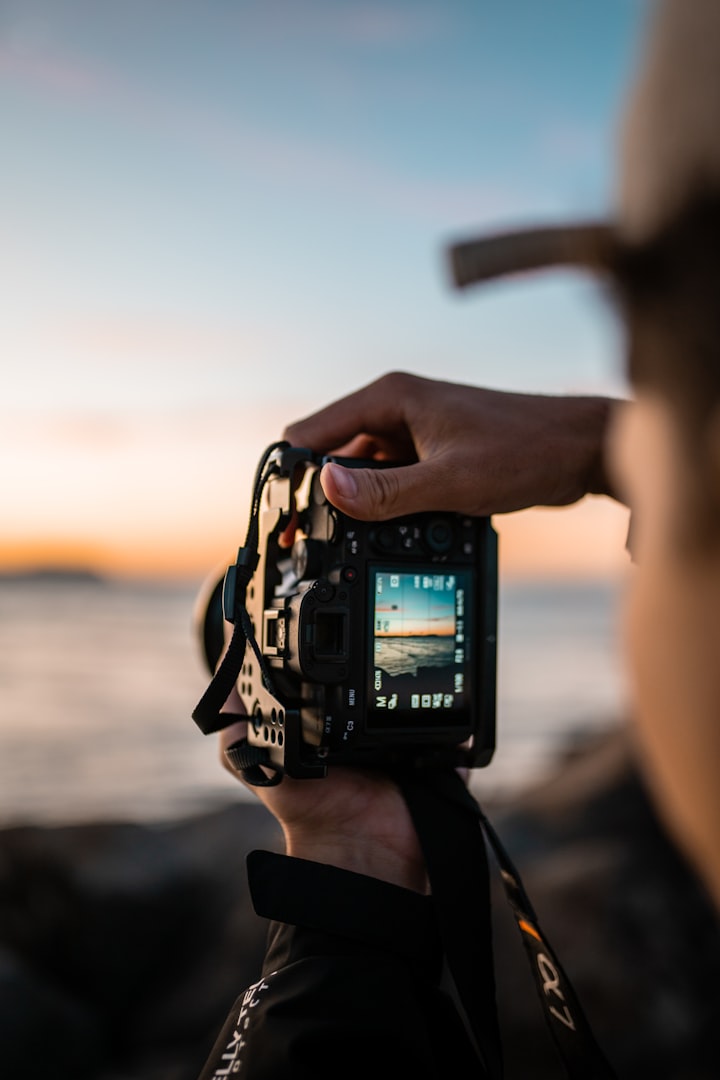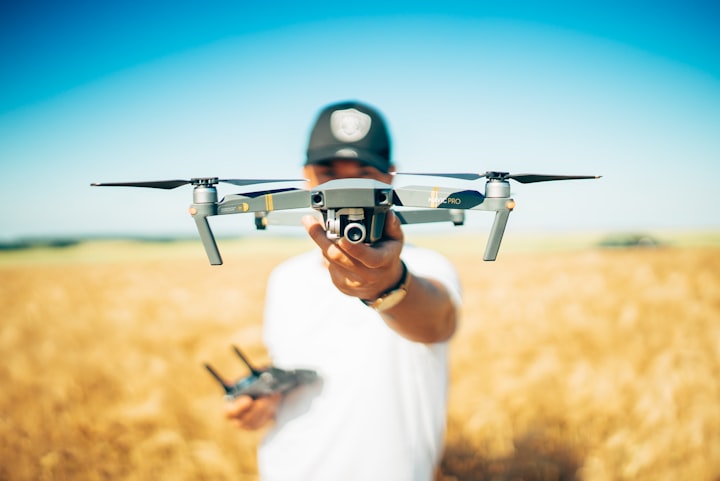Photography: from analog to social media
By Miranda Monahan

With the invention of social media, photographers now have more outlets than ever before to share their work.
Some people, like photographers, rely on social media heavily to be seen by the public.
Trevor Booth is a photographer in Windsor and has been working in the industry for nearly 20 years. Booth says social media has made being in the photography industry even harder.
“Social media hasn’t helped at all. What it has done has watered down the photography industry to the effect people expect to be rock stars when first starting out…and there are hundreds every year doing this,” says Booth.
Booth says photography is a business and without any business experience, photographers do not know how to price themselves and do not realize this is a business. This can be attributed to social media.
“So, in turn, they devalue the work involved and ultimately has devalued the entire industry,” says Booth. “Maybe it’s just in Windsor that this is happening. But the photography industry in Windsor is so saturated and social media has driven that extensively.”
Booth says social media has made the amount of bookings he receives slow down.
“It's only hurt my business,” says Booth. “Eight to 10 years ago I was extremely busy and every year as social media has become more prevalent my business has equally become slower. Even with my online presence as it is, which I feel is very strong, experience and knowledge mean nothing in the social media world.”
Booth says despite how much social media has hurt him as a photographer, he does need to have a social media presence.
Booth says without social media people will not see your work. If you do not post for three or more days, your photos will fall to the bottom of potential clients’ news feeds.
Part of this is how social media platforms’ algorithms, defined as calculations made by a computer to solve a problem, show content to users. For example, Instagram’s algorithm will push a post from a minute earlier higher on a user's feed than a post from a week ago. Instagram’s algorithm may also push content on a user's feed from someone they frequently interact with on the platform. Interactions can include “liking” a post or commenting on a post.
“I like social media for what it has done but on the other side of the coin I also hate it,” says Booth.
He says the majority of his time is spent on social media – focused on getting posts ready, deciding what content to use, how to use it, what tags are necessary and so on.
With posting more to social media, the cost of being a photographer increases.
“Time, I wish I could spend doing other things. And to have someone do it is very costly, and I can’t justify spending upwards of $5,000 to $6,000 a year for someone else to do it,” says Booth.
Nick Russell is the owner of Russtek Media, a social media and web design company.
Russell says social media is a necessity for photographers.
“Absolutely, so depending on the style of photographer, so there's like different wedding photographers, and they absolutely have to be on Instagram, Facebook, and one of the biggest things for photographers is Pinterest,” says Russell. “Because with old types of marketing and you can't really unless you're spending a lot of money in printing your photos, you're not going to get the reach that you do on social media. So social media has the biggest reach for the lowest cost and free if they have a good following.”
Russell says there is a myth when it comes to posting content online.
“The big misconception is you're going to put your stuff out there and people are just going to flock to it,” says Russell. “Doesn't matter how great your photos are. But if you're not engaging, and you're not, you don't have an audience that sees your stuff, you're not going to get that booking.”
Russell uses this example when he teaches organizations about how to use social media.
“I always use the example when I teach. I tell people t0 talk about being in a restaurant. If you're back to a photo that's on the wall, you don't see that photo and you don't know what's there. But if somebody points out that photo to you, you turn around now you can see that photo. And then you can talk about that photo to have a conversation around that,” says Russell.
“Social media is the exact same way as a photographer has a very, that their copies engaging, provides value to the audience,” says Russell.
“And it just takes that one person to comment and engage on that photo. Next thing you know, somebody in their audience sees that it can like follow and have a conversation. It's like a ripple effect. So the more people engage, the more people see it. And that will help them get more bookings and more business, says Russell.”
The streets were hit to see whether or not people think photographers need social media or not.
Patty Gellner is a casual social media user who uses social media for under an hour each day. Gellner only uses Facebook for social media.
“I think they do. To get their pictures out to different places, more people, more exposure,” says Gellner.
According to an academic paper written by Johnny Winston at Stanford University, the turn from analog to digital technologies made photos become very prevalent.
Winston writes anyone can be a photographer and post photos on social media. A photo can be seen instantaneously after it is posted. The cost of digital photography is less than it used to be because people carry around cell phones and do not often purchase separate cameras.
Winston says in his academic paper, that photography has become a new way of communicating.
“Compared to the days of analog photography, we increasingly use photographs to communicate, construct our identity, and understand reality,” writes Winston. “Even though photographs were long used to communicate, recently the comparative cheapness of digital photography, which eliminates the expense of wasted shots, and the relative ease with which digital images are shared, makes photography the tool of choice for communication in the digital age.”
According to a study called Selfiecity: Exploring Photography and Self-Fashioning in Social Media by Alise Tifentale and Lev Manovich, social media has created a genre of photos – selfies.
The selfie trend, which took off in approximately 2013, created a new genre of portrait photography. The difference is the portrait is not of someone else, but of the person taking the photograph.
“This hybrid phenomenon of vernacular photography and social media has created quite a bit of media hype,” the study cites.
The study analyzed photos from different cities around the world for different variants such as gender, number of selfies taken in that specific city and pose. Cities included in this study included Berlin, Bangkok and Sao Paulo.
The study revealed more females take selfies than males. The number of selfies taken differed from city to city.
“In every city we analyzed, there are significantly more women selfies than men selfies (from 1.3 times as many in Bangkok to 1.9 times more in Berlin),” according to the study.
According to Brandwatch, 3.2 billion images are shared online each day. Social media first emerged in 1997 with Six Degrees, which allowed users to create lists of users they wanted to communicate with on the platform. The name Six Degrees came from the “six degrees of separation theory.” Six Degrees shut down in 2001. It was proceeded by sites like MySpace, Friendster and LinkedIn. Today, social media is everywhere with sites like Facebook, Twitter, Snapchat and Instagram.
The term social media was first coined in the later part of 1994 by Darrell Berry, a photographer, writer, social media researcher, strategist and hacker. Berry is said to have started using the term while developing an online media platform called Matisse while he was living in Tokyo.
According to Today Creative, some social media platforms such as Facebook and Twitter have seen the number of users they have declined. Facebook used to have 79 percent of all people aged 12-34 in 2012. Today, that number is more like 62 percent. Twitter has also seen declines and is unpopular among African Americans.
Platforms such as Instagram and Snapchat have continued to grow predominately with teenagers and young adults. According to the PEW Research Institute, 78 percent of 18-24-year-olds use Snapchat and 71 percent of the same age group use Instagram in the US.
According to Today Creative, despite Facebook and Twitter’s decline, they are a lost cause and should not be left out of a social media marketing campaign. Photographers may need to readjust their marketing strategy for which platform is most popular at the time they are going to post a particular piece of content. Platforms on the rise today include TikTok and YouTube.
About the Creator
Miranda Monahan
Social Media and Community Manager






Comments
There are no comments for this story
Be the first to respond and start the conversation.